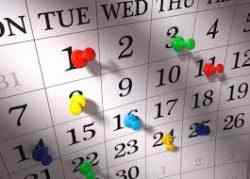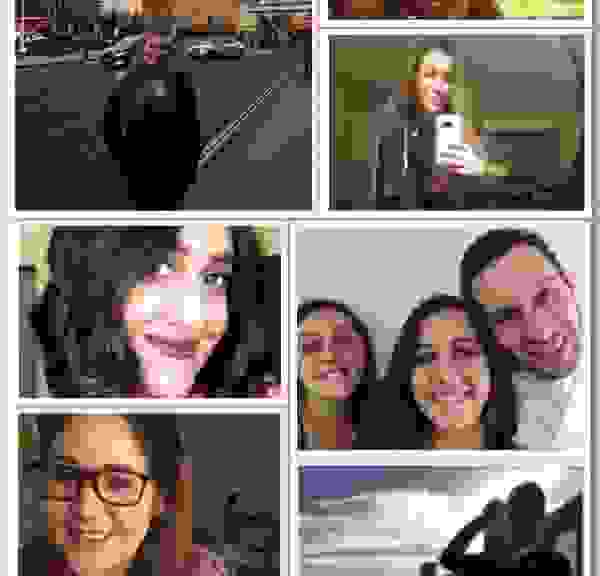
Featured Bloggers: Megan, Sean, Jamie L, Morgan, Tanpreet, Jodi, & Shannon
 Megan Lago: These past two weeks have been a whirlwind of literature and collaboration. We began the week by meeting our eighth grade reading buddies from Southern California. This will be a really great way to gain an understanding of working with students to understand a book more thoroughly. This is a very exciting opportunity and I can’t wait to see what everyone gets out of it. We have now had the opportunity to correspond twice with our buddies. I have personally been pleasantly surprised by the insightful conversation that I have had with my buddy so far. I think I may have underestimated the eighth graders.
Megan Lago: These past two weeks have been a whirlwind of literature and collaboration. We began the week by meeting our eighth grade reading buddies from Southern California. This will be a really great way to gain an understanding of working with students to understand a book more thoroughly. This is a very exciting opportunity and I can’t wait to see what everyone gets out of it. We have now had the opportunity to correspond twice with our buddies. I have personally been pleasantly surprised by the insightful conversation that I have had with my buddy so far. I think I may have underestimated the eighth graders.
We finished up our chapter books this week and ended the cycle with makes. This cycle the makes seem to be dominated by drawings. For Out of My Mind many chose to draw the scene in which Melody’s fish leaps out of its bowl to its death. Without speech or control of her movements, Melody was unable to save the fish: she attempted to keep it breathing by tipping the bowl covering it in water. Her mother made the assumption that Melody knocked the fish bowl over to kill the fish rather than to save it. This was a pivotal scene because it demonstrates the frustrations Melody experiences due to her cerebral palsy. I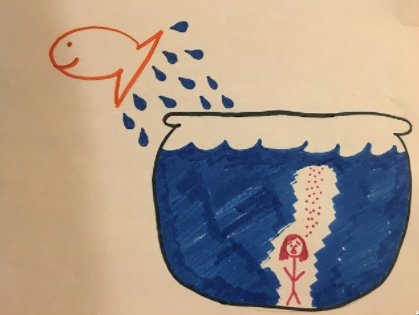 particularly liked the picture of this scene drawn by Kimberly Wright because she added melody to the fishbowl representing how Melody related to the fish feeling trapped.
particularly liked the picture of this scene drawn by Kimberly Wright because she added melody to the fishbowl representing how Melody related to the fish feeling trapped.
Regarding the book George, a story about a young trans girl struggling with the ability to self identify, I really enjoyed Tracie Sunseri’s drawing. In the drawing she shows a picture of a scene from Charlotte’s Web with the name Melissa in the web in pink. 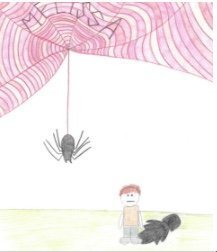 In the story, George wanted to play the role of Charlotte but was told she could not due to her biologically being a boy. I also liked how Tracie drew George’s shadow as a female representing her true identity.
In the story, George wanted to play the role of Charlotte but was told she could not due to her biologically being a boy. I also liked how Tracie drew George’s shadow as a female representing her true identity.
I enjoyed Katie Larson’s painting of her idea of what the forest in The Girl Who Drank the Moon looked like based on the book’s description (see Morgan’s blog below). This reminded me that we all have a unique picture reel going on in our heads while we read and thought it was really cool that Katie shared hers.This is something students can easily do regardless of artistic ability that can help them immerse themselves into the story.
We also read chapter 3 of Miller’s Reading in the Wild. I along with all of my classmates were particularly interested in the concept of a reading community. As Miller tells us, being able to share reading experiences and discuss themes is a key aspect of encouraging lifelong reading. Another important theme was the fact that one teacher alone cannot foster a love of reading. Parents must share the responsibility. Miller shared a few ways to get parents involved including loaning classroom books and teaching how to incorporate reading into family routines. Something I was particularly intrigued by was the passage in which Miller explains how she accidentally killed the joy of a few boys in her class reading a slightly risque book about male puberty. This hit on the idea that reading communities do not always have to involve the teacher: books involving embarrassing topics such as that of this particular book are acceptable to remain between the boys. Finally I loved the emphasis on access to books. It’s such a simple concept but a vital aspect to any students reading career. Students surrounded by books are more likely to pick one up, even if they aren’t avid readers. Miller’s book has been nothing but wonderful. I can tell that she has a passion for reading literature and wants to share more than just the requirement to read for school. It is a surprising interesting read especially considering it is a textbook used in a college classroom. I really liked that Miller included a passage about embarrassed readers. She really knows kids! Image is a huge aspect of a child’s life, even at a very young age. Before my nephew even got into school he was embarrassed to share things he had learned. This book helped me make the connection of why. Somewhere along the line, I’m guessing from a TV show or peer he picked up the idea that knowledge was lame. Even though he has a strong desire to learn he didn’t want to be judged for it so he repressed that desire. This is why it is important for students to see people they look up to and respect enjoying reading.
Author Bio: Megan moved to Chico about 8 months ago from Solano County. She discovered she wanted to be a teacher early because she has a butt load of teachers in the family and was exposed early on. She honed in on special ed after becoming a para-educator for her home county and realized she has a special desire to work with my mod/severe students. When she’s not enthralled in education, she is outside doing adventure things or hanging with her delightful roommates.
 Shannon Tatman: For the Make Cycle 3’s blog, Tanpreet, Morgan, and I decided to come together and create one blog. We each read a different chapter book to be able to show just how Cycle 3 brought us all together, which is what I primarily enjoyed about creating one blog post. I was able to hear about two of the other books that were enjoyed throughout this cycle. Morgan read George, Tanpreet read The War That Saved My Life, and I read Out of My Mind. With my chapter book, I kept a box of tissues next to me as I read more and more about an 11 year old girl who was very intelligent, but the issue was that no one ever understood just how smart she was. Melody unfortunately has Cerebral Palsy, but throughout the book each chapter explains just how difficult it is to live with a disability. Regardless of all the difficult challenges she is put through, this book does a wonderful job at showing how even if you can’t verbally say what’s on your mind, it does not mean you are not smart. Melody does an amazing job telling her story by showing everyone she loves just how smart and patient of a person she is.
Shannon Tatman: For the Make Cycle 3’s blog, Tanpreet, Morgan, and I decided to come together and create one blog. We each read a different chapter book to be able to show just how Cycle 3 brought us all together, which is what I primarily enjoyed about creating one blog post. I was able to hear about two of the other books that were enjoyed throughout this cycle. Morgan read George, Tanpreet read The War That Saved My Life, and I read Out of My Mind. With my chapter book, I kept a box of tissues next to me as I read more and more about an 11 year old girl who was very intelligent, but the issue was that no one ever understood just how smart she was. Melody unfortunately has Cerebral Palsy, but throughout the book each chapter explains just how difficult it is to live with a disability. Regardless of all the difficult challenges she is put through, this book does a wonderful job at showing how even if you can’t verbally say what’s on your mind, it does not mean you are not smart. Melody does an amazing job telling her story by showing everyone she loves just how smart and patient of a person she is.
As for the work we have done throughout this cycle, we were given book buddies, which was quite exciting to be able to share our thoughts with our 8th grade book buddies. As we post and talk about our books with our book buddy, we are able to create a connection with another student and figure out just how to create lesson
plans about certain books with our future students. It’s a great way to gain experience and create conversation about a book we have hopefully never read. We kept busy finishing up our chapter books, responding to our book buddies and talking more about their certain job they had for this week’s reading, and as well as a class we all created our makes for our chapter books we read. We had a lot more drawings for this cycle of makes, but all of them were very creative.
There were a couple of makes I wanted to highlight because they caught my attention, such as Ben Anderson’s drawing. 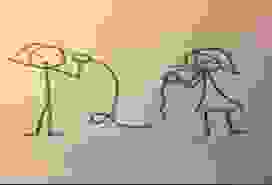 It seemed so simple when looking at the drawing, but I know for a fact that if given the chance to figure out what to draw for this book I would have so many thoughts on how I could represent the main character Melody. In this drawing I love the fact that even though it is so simple, it gets straight to the point on just how Melody truly felt. It was like she was playing a game of telephone, where no one would get the correct answer on what she was really trying to say. She was unable to speak for part of the book, and sometimes that really frustrated her, causing misfortunes between her and other loved ones throughout the book. We all as individuals get frustrated at times when we’ve tried to explain something multiple times to someone else, and they still don’t seem to quite understand. That’s exactly how Melody felt every day, and she was quite intelligent too.
It seemed so simple when looking at the drawing, but I know for a fact that if given the chance to figure out what to draw for this book I would have so many thoughts on how I could represent the main character Melody. In this drawing I love the fact that even though it is so simple, it gets straight to the point on just how Melody truly felt. It was like she was playing a game of telephone, where no one would get the correct answer on what she was really trying to say. She was unable to speak for part of the book, and sometimes that really frustrated her, causing misfortunes between her and other loved ones throughout the book. We all as individuals get frustrated at times when we’ve tried to explain something multiple times to someone else, and they still don’t seem to quite understand. That’s exactly how Melody felt every day, and she was quite intelligent too.
The other make that caught my attention was Chantal’s. I thought she did an awesome job at taking her book and creating a lesson for it. She decided to take from the book and create her own story about a time she felt unaccepted for who she was, such as how George felt in the book when he couldn’t be himself. 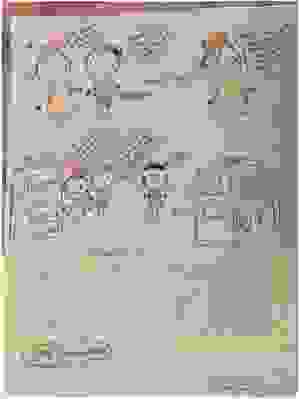 I think this does an amazing job at showing just how every student at one point can feel unaccepted for who they are. It’s great to reflect with students on this matter because it shows us how to appreciate one another, how to come together as a class, and all while showing their own story. Also if not wanting to connect it to the book, we can connect it by showing how they understand certain words as well. It shows a great connection to vocabulary, as well as showing a sense of creativity through drawings. As for all the other makes that were created for this cycle, they were all well done and I absolutely loved looking through them all, and getting a chance to write about all the hard work that was put into each project.
I think this does an amazing job at showing just how every student at one point can feel unaccepted for who they are. It’s great to reflect with students on this matter because it shows us how to appreciate one another, how to come together as a class, and all while showing their own story. Also if not wanting to connect it to the book, we can connect it by showing how they understand certain words as well. It shows a great connection to vocabulary, as well as showing a sense of creativity through drawings. As for all the other makes that were created for this cycle, they were all well done and I absolutely loved looking through them all, and getting a chance to write about all the hard work that was put into each project.
Now while we had some amazing makes the last bit of work that we also focused on for this week was Miller’s Chapter 3. As I read more of her book, I just hope and wish that I become just as amazing of a teacher as her. The way she inspires her students to read and open up offers a lot of encouragement to become more active readers. One aspect to chapter three that I absolutely loved was when she talks about how we as teachers have to bring the classroom together by creating a sense of community for our students, “I envision my classroom as a supportive place where my students and I take risks and learn” (89). Sparking us all to write about how we can start to prepare now to become the teacher Miller writes about throughout chapter 3. We all want to become an amazing teacher one day, we just have to accept the fact that it is all a learning process, and that each class we take will help us grow.
Author Bio: Shannon is in her third year at Chico State as a Liberal Studies Major while minoring in Special Education.She is from Sunny San Diego and on her spare time you can find her at Disneyland or maybe just watching a good ole Disney movie. She also enjoys to be outdoors, travel, and spending time with her family and friends when able too.
 Tanpreet Sahota: The book I read during this make was The War That Saved My Life. The book was really appealing to me because I am usually interested in books about war and history. I didn’t expect this book to have so much meaning and lessons within the book. This book takes place in London just before World War II. Ada, the main character, doesn‘t know how old she is, her last name, or really anything about life outside the room where her mother has kept her in terrible conditions for as long as she can remember. Ada’s mother is embarrassed at the thought of people knowing she has a disabled daughter and was born with a clubfoot and gets around by crawling, so Ada has no dealings with other people, except to wave from her window. Her younger brother, Jamie, who’s about to start school, is more mobile and sometimes steals food for his starving sister. Their mother beats them both regularly and often doesn’t give them enough to eat. Suddenly, as World War II and a possible German invasion loom, the kids are evacuated to the countryside, where they’re so filthy and lice-infested that nobody wants them. When a local woman is forced to take them in, their lives change in unimaginable ways, including having clean clothes and regular meals. Also, there’s a pony. As the kids experience love and kindness for the first time in their lives and learn to pitch in with the war effort, Ada can’t get away from her biggest terror: that their new happiness will last only until their mother finds it more convenient to take them back to their old life. It was great to see the emotions Ada went through that some children can go through but might not know it. After reading this book it will be good for children to see what the children of the war had to go though. This would be a good way for children to see other children growing up in other circumstances and always living in fear for the unknown.
Tanpreet Sahota: The book I read during this make was The War That Saved My Life. The book was really appealing to me because I am usually interested in books about war and history. I didn’t expect this book to have so much meaning and lessons within the book. This book takes place in London just before World War II. Ada, the main character, doesn‘t know how old she is, her last name, or really anything about life outside the room where her mother has kept her in terrible conditions for as long as she can remember. Ada’s mother is embarrassed at the thought of people knowing she has a disabled daughter and was born with a clubfoot and gets around by crawling, so Ada has no dealings with other people, except to wave from her window. Her younger brother, Jamie, who’s about to start school, is more mobile and sometimes steals food for his starving sister. Their mother beats them both regularly and often doesn’t give them enough to eat. Suddenly, as World War II and a possible German invasion loom, the kids are evacuated to the countryside, where they’re so filthy and lice-infested that nobody wants them. When a local woman is forced to take them in, their lives change in unimaginable ways, including having clean clothes and regular meals. Also, there’s a pony. As the kids experience love and kindness for the first time in their lives and learn to pitch in with the war effort, Ada can’t get away from her biggest terror: that their new happiness will last only until their mother finds it more convenient to take them back to their old life. It was great to see the emotions Ada went through that some children can go through but might not know it. After reading this book it will be good for children to see what the children of the war had to go though. This would be a good way for children to see other children growing up in other circumstances and always living in fear for the unknown.
After seeing all the fun little activities that we can do for the book I really enjoyed quite a few of them that work perfectly for a lesson. I liked what Alison Zuris did with creating the pony Butter. 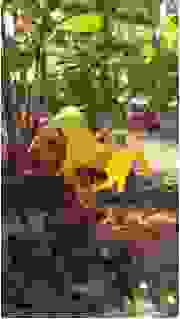 Ada had such a great connection with the pony and this was a great representation. This would be fun if the kids could make something that has an impact on them in their real life. It can be something small like a dog or an animal or even a person they look up to. I love that it is such a simple idea but has so much meaning to the lesson. This can represent how Ada would have butter to be with in hard times and can help children create something that helps them and has an impact on them too. I also really liked Teija Gregory’s because she recreated the cover or the book.
Ada had such a great connection with the pony and this was a great representation. This would be fun if the kids could make something that has an impact on them in their real life. It can be something small like a dog or an animal or even a person they look up to. I love that it is such a simple idea but has so much meaning to the lesson. This can represent how Ada would have butter to be with in hard times and can help children create something that helps them and has an impact on them too. I also really liked Teija Gregory’s because she recreated the cover or the book. 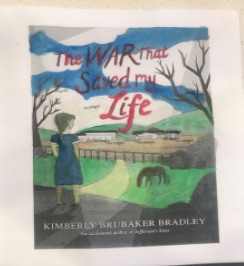 I believe that the cover of the book really represented how Ada would view her past with the dark colors but also represented her new life with the possibilities of hope. It also shows that as there is a war going on that she is able to have a new hope and outlook on a new life that she might not of had without the war happening. This is a really fun make because it represents so much in a small painting.
I believe that the cover of the book really represented how Ada would view her past with the dark colors but also represented her new life with the possibilities of hope. It also shows that as there is a war going on that she is able to have a new hope and outlook on a new life that she might not of had without the war happening. This is a really fun make because it represents so much in a small painting.
There were also so many other great makes from other books that were read. I really enjoyed reading the makes from the book George. I was very curious about the book itself because it already seemed to have so much meaning. I really liked the one where he is a boy but thinking of who he really wants to be.
Author Bio: Tanpreet is in her fourth year here at Chico State and is a liberal studies major. She is from Roseville and was born in England 21 years ago. She loves to travel and just explore new places in the world. She cannot wait to be a teacher and just have an impact on children.
 Morgan Carrico: The book I read for this make cycle was George. I first started out reading, The Girl Who Drank the Moon, and after a few days of reading it I discovered that the book was not meant for me. My table mate Sean kept telling me that I should switch books and start reading George, and I instantly decided to make the switch. And that was the best decision. If I am being honest, I would normally not chose to read a book like this but I decided to branch out and read it to expand my knowledge on a topic like this. I think that this book is something that I as a future teacher would love to have in my classroom library for my students to read. There is a chance that we may have students who are in our classrooms that may be going through the same struggles that George is going through. I think it would be so special to be able to reach for the shelf and hand the child this book and know that they can relate to this character. The book is about a transgender boy named George, who really just wants to be Melissa. Throughout the book you get to see all the different struggles she goes through with wanting to reveal to her friends and family that she is really wanting to live as Melissa. Throughout the book she struggles with the fact that her teacher will not let her be Charolette in the school play. This role in the play is “typically” played by a female student, but George is struggling to tell people that he wants to be Melissa. I think some child is facing something in their lives that they may be struggling with deep down inside. It is important to note that as future educators we should never serve things as gender specific; this means that girls and boys are interchangeable and should be able to do whatever they please without any restrictions. I think it is important to make your classroom a safe place for your students. Make them comfortable enough that they feel they are able to come up to you and tell you anything that they may be struggling with or find concerning.
Morgan Carrico: The book I read for this make cycle was George. I first started out reading, The Girl Who Drank the Moon, and after a few days of reading it I discovered that the book was not meant for me. My table mate Sean kept telling me that I should switch books and start reading George, and I instantly decided to make the switch. And that was the best decision. If I am being honest, I would normally not chose to read a book like this but I decided to branch out and read it to expand my knowledge on a topic like this. I think that this book is something that I as a future teacher would love to have in my classroom library for my students to read. There is a chance that we may have students who are in our classrooms that may be going through the same struggles that George is going through. I think it would be so special to be able to reach for the shelf and hand the child this book and know that they can relate to this character. The book is about a transgender boy named George, who really just wants to be Melissa. Throughout the book you get to see all the different struggles she goes through with wanting to reveal to her friends and family that she is really wanting to live as Melissa. Throughout the book she struggles with the fact that her teacher will not let her be Charolette in the school play. This role in the play is “typically” played by a female student, but George is struggling to tell people that he wants to be Melissa. I think some child is facing something in their lives that they may be struggling with deep down inside. It is important to note that as future educators we should never serve things as gender specific; this means that girls and boys are interchangeable and should be able to do whatever they please without any restrictions. I think it is important to make your classroom a safe place for your students. Make them comfortable enough that they feel they are able to come up to you and tell you anything that they may be struggling with or find concerning.
This weeks makes were actually really interesting to look at. I noticed this week’s common theme for the makes was arts and crafts. As I scrolled through Google plus, I noticed the common theme of everyone sticking to drawing something. I found this to be rather interesting as opposed to last weeks make cycle. Last week I think people were way more creative and willing to step outside the box. Maybe this week, my classmates were not really motivated with their chapter books, or maybe struggled more with coming up with something creative to do. Even though Allison said that she struggled when creating this make, I still think that she was very successful. I loved the way she wrote about this make, and her creativity to use a clever pun which made me laugh. I could easily see this as an outdoor activity that you could use with your class when reading The War That Saved My Life. Even though she stated in her make that she wished it would have gone differently, I still love this make.
Another make that I personally enjoyed was the make by Katie, who read The Girl Who Drank The Moon. I love that instead of drawing on a piece of paper, she decided it would be a good idea to paint on a canvas.
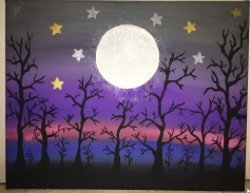
I love the different colors used to represent the sky, and the fact that the moon is that main focus of the painting. I think that this is a fun arts and crafts project that your students can do when reading any book. Have them draw or paint a picture representing a specific scene from the book, just to see how they picture it in their heads.
When it came to the makes for the book, Out of My Mind you can see the common theme was the drawing that is represented on the front over. For the book George, I think that people had really good drawings for their makes.
I love the detail and thought that went into creating this make. I would use this as a lesson plan in my future classroom, especially when reading a complex book such as George. I like how this make was created like she was a student who was receiving this assignment from her teacher. This teacher’s students to read about a story where someone is going through a period of time where he/she may feel trapped or need help. This creative activity gives students free range to think of a time where they may have being struggling to tell someone something like George had. Overall, this make was hands down my favorite, and something I would use as an assignment for one of my future classes.
Author Bio: Morgan is a senior this year at Chico State. She is a Liberal Studies major and is so excited to enter the credential program next year at Chico State, which will put her one year closer to being able to teach in her own classroom.She is from a small town in the dry central valley called Ripon. Ever since she was a little girl, she knew she wanted to be a teacher. She grew up watching her grandma work in different elementary school classrooms as a child and knew that is it was something she wanted to do.
 Jamie Ledesma: In our second make cycle I read the book George. I thought it was such an awesome book. It is about a little boy named George who wants to be a little girl. I will refer to George as a she. George wants to be named Melissa. George fantasizes about hanging out with girls and doing girly things. George is really shy and timid and does not hang out with many people. Her only friend is a girl named Kelly. Kelly is very social and outgoing. No one knows that George wants to be a girl. It kills him inside not to be able to tell people because she is not be able to be who she wants to be. She is living as someone that she is not comfortable with. By the end of the book, George finally tells people that she wants to be a girl. Everyone accepts her for who she is. Her mom tells her that she will love her no matter what. Kelly lets George borrow her clothes, but by this time she is going by Melissa. Now Melissa feels so much better because she can finally be who she wants to be.
Jamie Ledesma: In our second make cycle I read the book George. I thought it was such an awesome book. It is about a little boy named George who wants to be a little girl. I will refer to George as a she. George wants to be named Melissa. George fantasizes about hanging out with girls and doing girly things. George is really shy and timid and does not hang out with many people. Her only friend is a girl named Kelly. Kelly is very social and outgoing. No one knows that George wants to be a girl. It kills him inside not to be able to tell people because she is not be able to be who she wants to be. She is living as someone that she is not comfortable with. By the end of the book, George finally tells people that she wants to be a girl. Everyone accepts her for who she is. Her mom tells her that she will love her no matter what. Kelly lets George borrow her clothes, but by this time she is going by Melissa. Now Melissa feels so much better because she can finally be who she wants to be.
In the first week of our make cycle we had a group presentation. I actually was one of the presenters. The book presentation for that week was about David Weisner. Traci was another presenter for the book presentation. I think she did an awesome job presenting the activity. The activity was to make a story based on the pictures that were shown. I believe that this is a great activity to do with students. This activity is engaging and it could bring out creativity in students. No student is going to have the same story or ideas, everyone is going to have something different on their paper. This is a good way for students to practice creative thinking and critical thinking.
In the second week of our make cycle we read chapter three of Reading in the Wild. Donalyn Miller is a great teacher and she has many ideas that are very inspiring and that i could use in my classroom. I love how Donalyn Miller makes reading fun in her classroom and she makes her classroom like a community. Everyone respects and cares about each other’s ideas. If the parent encourages their child to read, the child is going to be more willing to want to read. She mentions it is important to make the parents aware and give them tips on how to encourage their children to read. By doing this you are fostering a reading community.
A passage in the book that I enjoyed was on page 126 of the online book where Miller talks about homework. She talks about how many students report they do not have enough time to read because of all their homework and I believe that this is true because I know I do not have that much time to read with all my homework. She also talks about research that has been done on how homework is not even effective and that teachers should not give so much after school homework, especially if it is busy work. I believe this is true, if you are just going to assign busy work, I think it should just not be assigned, so the children have more time to read. I believe that teachers should give their students time to read inside and outside of the class. If this is encouraged then I think more students would want to read.
Then another part of our make cycle was our makes. I chose a couple that I really enjoyed. The first make I was fascinated with was Alondra Alviar’s make. She read A Girl Who Drank the Moon. 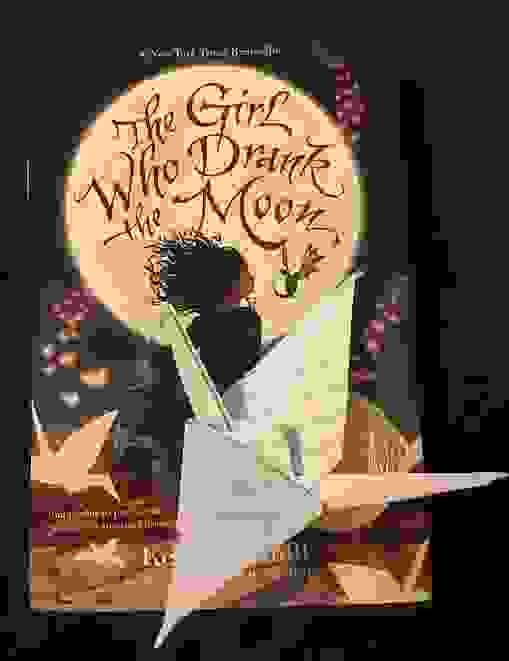 I thought there was very much thought to it. I enjoyed how her make was about an important part of the book. The boy escaped because of paper birds and was able to be free, seems like an important part of the book. It seems like it is the only happy part the book.
I thought there was very much thought to it. I enjoyed how her make was about an important part of the book. The boy escaped because of paper birds and was able to be free, seems like an important part of the book. It seems like it is the only happy part the book.
Another make that I really enjoyed was Kimberly Wright’s make (see above). She read the book Out of My Mind. She drew the fish jumping out of the fish bowl, which is a scene from the book. Then she also included Melody in the fishbowl. I think this captures just how melody feels. She is trapped in her own body and she can not express how she feels. Everyone thinks she is dumb and she can not do anything about it. I think that her drawing really captures how Melody feels, trapped.
Author Bio: Jamie is shy at first, but when you actually get to know her is very loud and outgoing. She has two siblings, one older brother and one younger sister; they are shown in the photo above. She has been a swim instructor for two years at Water Sprites swim school. She is not a big reader, but is trying to get into it now. This class has made her read more than ever in her college career. Jamie cannot wait to be a teacher and make a difference in little children’s lives. She cannot wait to graduate and become a teacher!
 Sean Gamer: For our second make cycle, we were given several options of different chapter books to read in our English class. I chose the book George, by Alex Gino. After choosing and reading the entire book, all I could think was I wish I could have had a friend like George. In the book George, George is a male who identifies as a female. George tells her story in the first person of how she truly feels and her relationships at home and school. George in the book is very shy and timid and does not want to come out to the world as female yet. With the help of her social friend Kelly, George begins to learn more about the trans community, the important people in her life, and herself. At the back of the book, the author Alex Gino is asked questions about why he wrote the book, what he wants readers to understand about the LGBTQA+ community, some background about his personal life, and has a very positive message about the character George. Although I did not expect this, George has become a hero to me. Although she is not a real person, she has a story that needs to be told and I think this is a great book for anyone who would like to learn more about the trans community.
Sean Gamer: For our second make cycle, we were given several options of different chapter books to read in our English class. I chose the book George, by Alex Gino. After choosing and reading the entire book, all I could think was I wish I could have had a friend like George. In the book George, George is a male who identifies as a female. George tells her story in the first person of how she truly feels and her relationships at home and school. George in the book is very shy and timid and does not want to come out to the world as female yet. With the help of her social friend Kelly, George begins to learn more about the trans community, the important people in her life, and herself. At the back of the book, the author Alex Gino is asked questions about why he wrote the book, what he wants readers to understand about the LGBTQA+ community, some background about his personal life, and has a very positive message about the character George. Although I did not expect this, George has become a hero to me. Although she is not a real person, she has a story that needs to be told and I think this is a great book for anyone who would like to learn more about the trans community.
In addition to reading our chapter books, we were asked to read Donalyn Miller’s Reading in the Wild. Miller has a plethora of wonderful ideas of how to start a library but also how to maintain a classroom idea. In elementary school, a classroom library was used as a punishment. If we were being too loud in class our teachers would ask us to pull a book off the shelf and read. If we had to stay in for lunch or recess we had to sit at our desk and read a book. I don’t believe reading should be a punishment. I want a classroom library for my students. They can pop in and borrow the book and bring it back when they are done. Miller gives students the independence to read the book how they want to read the book. I wish my teachers were like that. Reading is cool. She emphasizes the importance of reading to build conversation and have the ability to not only talk about books with other peers, but recommend books to peers as well (Miller 98). As future teachers, we need to be reading and start our book collections. I cannot wait to suggest a book to a student. Perhaps, that student will like the book and want to read more from the author.
It was a treat to see my classmates’ artifacts they have created from this cycle. I was infatuated with the masterpieces that reflected the chapter books we read for the past two weeks. There was a lot of art and I think that was the a good way to tie in what we found most interesting about our chapter books. Everyone in the class offered a unique perspective to what they read. My first example I would like to showcase is Colleen’s play bill drawing. 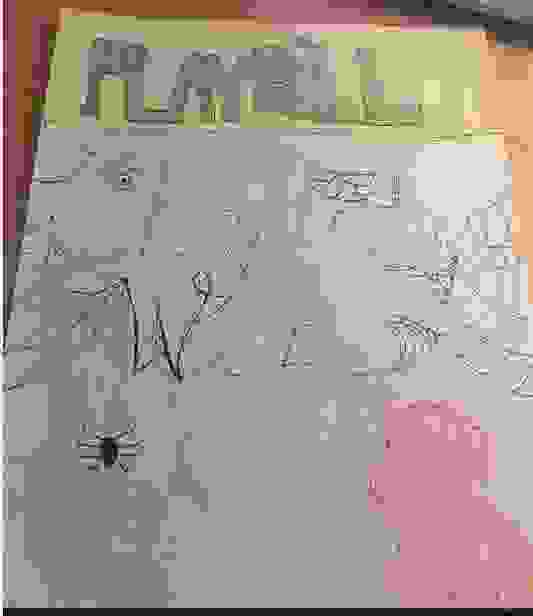 I think this is a unique way to introduce a significant detail in the book George. This is something that can be done in a classroom and each student can design their own interpretation of what the play bill could have looked like in the book.
I think this is a unique way to introduce a significant detail in the book George. This is something that can be done in a classroom and each student can design their own interpretation of what the play bill could have looked like in the book.
There were an abundance of drawings for this make cycle. That is why the origami paper crane made by Alondra Alviar stuck out to me. In the book, The Girl Who Drank the Moon, Alondra gives an insight about Luna and Atain’s story. I think with plenty of visual aids, a teacher can do this as an introduction before reading the book. Nice work Alondra.
I was also very enlightened by Alison Zuris’ butter on a stick idea. It was so adorable. Alison explains to us that she made this horse on a stick in her front yard because Ada in the book, The War that Saved my Life, develops a strong connection with a pony. Alison’s original idea was to make a stuffed horse, but this idea can be done in the classroom. It is also adorable!
Author Bio: When he’s not in the classroom, Sean loves to play tennis and run. He also loves to be on the beach and explore upper park. He can’t wait to become a teacher and have his own classroom.
Jodi Steigerwald: The book I chose to read for this Make cycle is The Girl Who Drank the Moon.
I really enjoyed reading this book because Kelly Barnhill does an amazing job at transporting the reader to a completely different universe. While reading, I found the words that she used for some of the main terms used throughout the book really interesting and specific. An example of this is how she names the sad, controlled town “The Protectorate.” The age group that Barnhill targets to read the book is fifth grade- middle school kids, and personally at that age, I would never had thought to connect the word “Protectorate” to the actual meaning of the word. By using a term a slightly more magical word, she helps students unintentionally connect words to their meaning. Barnhill also uses very descriptive language throughout the entire book. The illuminating language creates a bubble of fantasy for the kids who read the book. Because of this, this book would be very useful for kids who are having trouble picking up a book and reading it until the end.
A part of Miller’s chapter three that really stood out to me and made a lasting impression was her graffiti wall. Her idea to have kids write down their reading influences is a great idea. All kids have different styles of what they like to read. Having students fill out this worksheet is a really helpful for the teacher to keep track of how students’ tastes in books evolve or stay the same. Miller is a very well read teacher in the way that she can recommend a book to any kid in her class. Having this worksheet, a teacher can start recommending books on certain subjects to kids, or even start seeking out books that are on a subject they may not be well read in.
This week of Makes was really fun to look at! I really enjoyed looking at all the different ways that people enjoyed and interpreted their chapter books. I think the Make process is so interesting to look at because of how many different ways the people in our class decide to do makes. I really enjoyed the make by Kimberly. I thought she drew a really cool picture for the book Out of my Mind. I thought it was really creative how she drew Melody inside of the fish bowl with Ollie, her fish. This is such a creative way to show how Melody feels trapped in her own body. This drawing is also a way to help people understand how Melody wishes she could do the same thing as Ollie and escape out of her body. Another Make I really enjoyed was Alondra’s origami paper bird. I thought it went along perfectly with one of the turning points in the book when the Madwoman escapes.
Author Bio: Jodi is a 2nd year at Chico State. She is a liberal studies major and wants to become a Kindergarten- 3rd grade teacher. She has 3 older sisters and a younger brother that are scattered in between California and Texas. Her 2 dogs, Ronni and Murphy, are her pride and joy.

